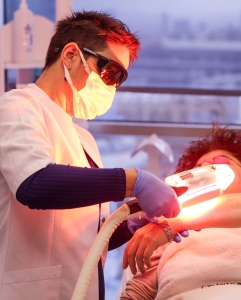In today's fast-paced world, where stress and anxiety are our constant companions, more and more people are turning to alternative methods of healing and self-expression. One such method that's gaining recognition is painting therapy, also known as art therapy. It's not just a recreational activity - painting therapy has a ton of benefits for those seeking emotional, mental, and even physical well-being. This article explores the top perks of painting therapy and sheds light on why it's becoming a crucial part of holistic healthcare.
1. Stress Relief and Relaxation
The act of painting can be incredibly therapeutic, offering individuals a chance to immerse themselves in the creative process and escape from daily stressors. Engaging in art-making triggers the release of endorphins, often referred to as "feel-good" hormones, which help alleviate stress and promote relaxation. The rhythmic motion of brush strokes and the focused concentration required during the artistic process create a meditative state that calms the mind and reduces anxiety. Through painting, individuals can find solace and inner peace, allowing their worries to fade away as they express themselves on the canvas.
2. Emotional Expression
Expressing emotions verbally can be challenging for many. Painting therapy offers a non-verbal means of emotional expression, where colors, shapes, and brush strokes convey feelings that words often fall short of capturing. This form of therapy holds particular value for those who have undergone trauma, grief, or grapple with complex emotions. Through their artwork, individuals can externalize internal struggles, fostering a deeper understanding and processing of their feelings.
3. Self-Discovery and Insight
Participating in painting therapy frequently reveals hidden aspects of the self that may have otherwise remained concealed. The selection of colors, subjects, and overall composition has the power to unveil subconscious thoughts and desires. Therapists adept in art interpretation can skillfully guide individuals in comprehending the symbolism within their artwork, fostering self-awareness and providing profound insight into their psyche.
4. Boosting Self-Esteem and Confidence
Engaging in the creation of art, regardless of one's proficiency, cultivates a profound sense of achievement. As individuals explore various techniques and witness their own growth, their self-esteem and self-assurance naturally flourish. The process of transforming a blank canvas into a meaningful masterpiece instills a deep sense of pride and empowerment, extending its influence to other facets of life.
5. Cognitive Enhancement
Painting therapy engages cognitive functions such as problem-solving, spatial awareness, and critical thinking. Deciding on colors, planning compositions, and making creative choices all contribute to cognitive stimulation. This is particularly valuable for individuals looking to enhance their cognitive abilities, such as children in developmental stages or the elderly seeking to keep their minds sharp.
6. Communication Improvement
Art serves as a universal language that transcends cultural and linguistic barriers. For individuals who struggle with verbal communication, such as those on the autism spectrum or those with social anxiety, painting therapy provides an alternative means of expression. It opens doors for effective communication, enabling them to share thoughts and emotions that might remain locked.






